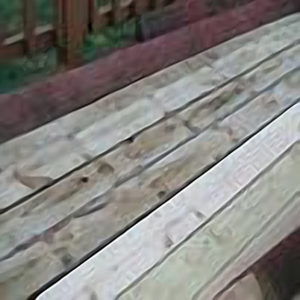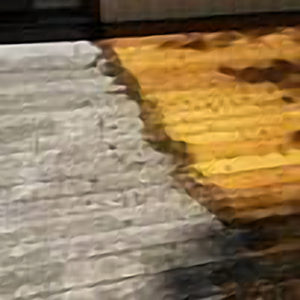Redwood deck looks bad even though I apply a good finish on it every two years as the sealer reads on the can says to do.
The answer is that I needed a little more information before I could give an answer. So after a few follow-up questions, I will explain.
Redwood for a deck is one of the most favorable and beautiful decks that can be installed. Lasting for many years, as long as you take care of it.
When questioning this person about their deck I discovered that when the deck was installed a lumber yard clerk sold them an expensive sealer and then explained just put this product on the beautiful redwood and it will need to be put on every two years to maintain its beauty for a long time.
THAT ISN’T WHAT HAPPENED! After installing this very expensive redwood deck the customer applied as per instructions from the lumber yard that sold them this very expensive wood. By the way, this deck and railings were about fifteen hundred square feet. They applied two coats of sealer that enhanced the redwood to the most beautiful vivid redwood color. Everyone was so impressed and kudos went to everybody involved with this project.
Within six months the deck had turned from a vivid redwood tone to BLACK or variations thereof. The lumber yard spokesperson inspected this project and informed them that this sometimes happens because of the tannins in the redwood mixed with some moisture causes this condition to happen. Their answer was to put more of the same sealer on with some semi-transparent color in it to cover up the black blotchy deck color. So this customer did just that. Now the deck had an artificial look to it and they were very disappointed with the result. One caveat is that the lumberyard spokesperson had the gall to say that eventually, they would need to put a solid stain on the deck.
Wow! I wished they had known Roger Merrill when installing this deck. Because I have worked putting finishes on redwood decks for more than thirty years with extraordinary success.
Now to the answer and it may be difficult to swallow. After installing a redwood or cedar deck you need to clean off the mil glaze on the surface of the wood caused by the hot cutting blades when milling the wood.
After milling (cutting into the finished size) the wood is immediately stacked on pallets. That keeps the wood from drying out and contains the acid within the redwood or cedar. Many years ago (more than fifty years) redwood was stacked in lumber yards for a few years to naturally dry out. That doesn’t happen anymore.
The new redwood or cedar need to be cleaned with a premium cleaner with oxalic acid in it. BEHR makes such a product. All-in-One Wood Cleaner.

This product needs to be applied by garden sprayer then scrubbed with a deck brush and then rinsed. This will remove any mill glaze, tannins and this is the part people do not want to hear it also removes a lot of red from the wood. This excess red color is tannins that redwood contain. Tannins are what cause the redwood to discolor black or blotchy when mixed with water.
After drying for at least twenty-four hours a sealer like Sikkens Cetol SRD can be successfully be applied.

One coat application is all that is necessary at this time, however, I believe that within six months you need to clean the deck on more time and apply the second coat. This gives the fresh wood time to acclimate to the existing weather and environment so after applying the second coat will last at least two years before needing any attention. Because you used the cleaner to remove the tannins the deck keeps its redwood beautiful appearance.
For our original questioner, what do they do now? They need to strip all the existing inferior finish off the surface and start over. I know that’s a lot of work however that is necessary to have a lasting and beautiful deck.
Start by using a deck stripper by BEHR Premium Wood Stain & Finish Stripper. It really works well.

NOTE! Using this stripper will turn your deck dark or black in places. DON’T WORRY. This is normal for cedar and redwood. You may need a power washer with a fan tip NOT a pointed tip, to help blow off the residue. After the deck has dried you now need to use the BEHR All-in-One Cleaner and that will lighten the wood back to a wood tone. You may not retain all the natural redwood color. Apply the Sikkens Cetol SRD with a ‘Translucent’ color tone to tone the deck evenly.
For reapplying applications let your common sense guide you. When it starts to show some wear or slight discoloration reapply a cleaner and finish. Doing this maintenance process is not very much time to maintain a beautiful redwood deck.
PS: If you happen to live in the Sedona area you can give me a call if you would like me to estimate your exterior deck, new or renovate. Roger Merrill
From black to natural with cleaner.

Grayed out deck that needs a cleaner.
What a cleaner can do.

Maintained Deck

— ooo —


